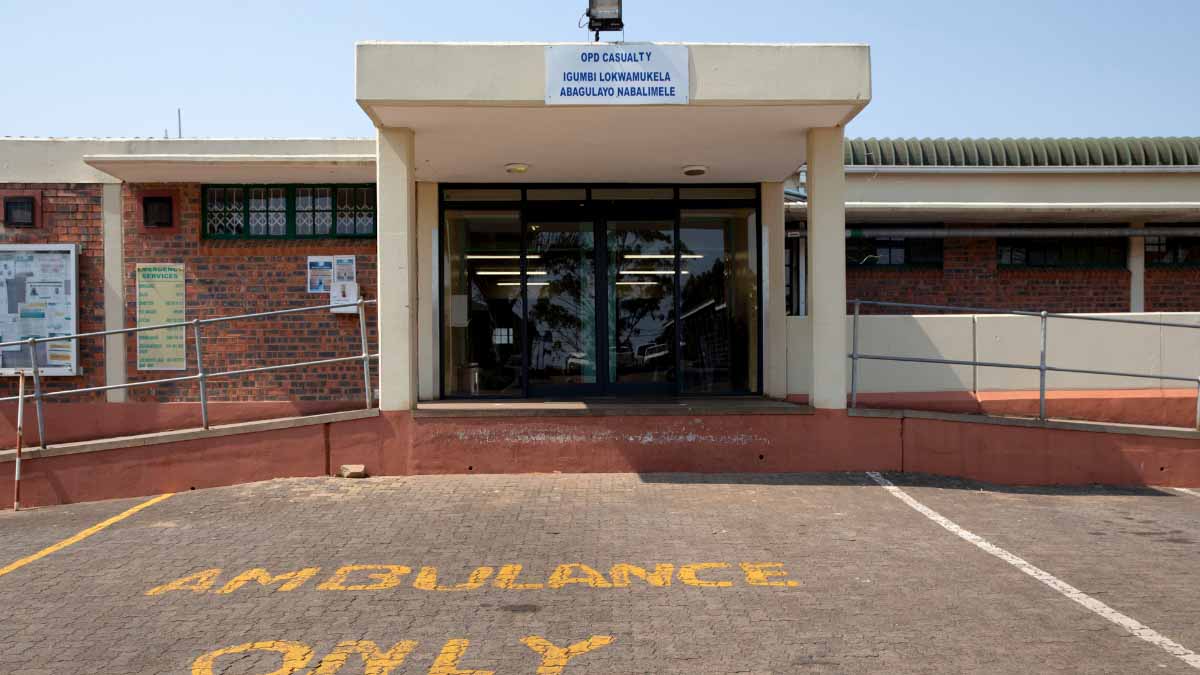What does the data about medical negligence cases in the public health sector tell us?
We analysed the numbers released by Health Minister Aaron Motsoaledi and the Special Investigating Unit on 24 August
style="font-weight: 400;">at a press briefing to make it easier to understand where what kinds of problems occur — from dodgy lawyers and unethical health workers to just plain fishy cases.
In 2017, the Special Investigating Unit was called in to look into what was afoot. By July 2024, they had flagged 2,830 cases out of 10,679 in total as fishy and needing to be investigated.
Of these, the ones in the Northern Cape cost, on average, four times more per case than in Gauteng, even though the province’s health budget is far smaller than Gauteng’s.
Nearly one in three cases being looked at are from Mpumalanga, with KwaZulu-Natal on its heels.
The third spot is a tussle, because although Gauteng’s claims being investigated are about double that of Limpopo, the value of those in the northernmost province is about a billion rand more.
But first, some background.
Where things stand now
By the end of March, provincial health departments faced about R78-billion in medical negligence cases against them, which is almost 80% of the combined budget for such departments meant to be used for treating people.
About 90% of the total budget that the Treasury allocates to health each year goes towards provincial health departments, as they are the ones that roll out the policies the national department develops.
Every financial year these departments started “on the backfoot”, Thabelo Musisinyani, head of the unit that takes care of the health portfolio at the auditor-general’s office, told Parliament last week. This, she says, is made worse because they have to then borrow from future budgets to pay for medical negligence claims from previous years.
In a decade, from 2012 to 2022, the amount the government spent on paying out compensation for medical negligence grew tenfold — from R265-million to R2.6-billion.
In 2018, claims against the departments sat at R70-billion, which the government wanted to come down to below R18-billion by 2024.
But instead it is now four times higher.
These claims aren’t all legit, though. Because dodgy lawyers have found loopholes in the legal system and state hospitals’ recordkeeping is not in order, large amounts of money are unnecessarily paid out.
The result of rising claims has a crippling ripple effect: more and more of the coming years’ money is used to cover expenses from previous years, leaving less and less to fund services that people need.
So, what do the numbers show?
Mpumalanga, KZN, Limpopo and Gauteng
Mpumalanga has 902 cases under the magnifying glass — nearly a third of the total number being looked at — at a combined value of just over R10-billion.

KwaZulu-Natal is second, with 713 cases to the value of R8.7-billion. Third spot is Gauteng, but only when measured by the number of cases under investigation — about double that of Limpopo. But when it comes to the monetary value of potential payouts of those claims, the cases in the northernmost province are about a billion rand more than in Gauteng.
Payouts in medical negligence cases are generally big because they include the cost of future medical care — often in private hospitals, Health Minister Aaron Motsoaledi says — and compensation for possible income the patient would have had if negligent treatment had not disrupted their life.
The Special Investigating Unit found that some of the fishy claims were from lawyers suing the State for future medical costs even though the patients had already died.
Free State
In the Free State, one of the drivers behind shady claims was stolen medical records, a situation the auditor-general had previously flagged as problematic when it found that state hospitals don’t have proper systems to keep track of patient files.
This opens opportunities for records to be stolen and sold to unscrupulous lawyers, who know that without the files the State won’t be able to argue these cases. Musisinyani says this is one of the reasons the departments end up losing in court and having to pay.
Northern Cape, Eastern Cape and North West

Even though the Northern Cape only has 20 fishy cases being looked at, each costs, on average, R28-million; compare that with the roughly R7-million per case in Gauteng and North West.
Moreover, over half the total value of claims in the Northern Cape at the moment comes from only seven cases. Four of these had a combined value of R169-million and were submitted by a single lawyer — who, patients say, they never instructed to lodge a malpractice claim.
In order to open a case on someone’s behalf, a lawyer needs to be given power of attorney, which means they can act as the person’s legal representative in court.
Three other claims in this province — for a total of R129-million — involved touting, which is when an unscrupulous professional like a lawyer or nurse tries to recruit patients to sue the state by offering them big payouts.
In the Eastern Cape, claims flagged for investigation are worth about R19.3-million each. The Special Investigating Unit’s findings showed that close to a third of the claims in the province came from a single law firm and had a total value of R600-million.
But their methods were dodgy, because the firm “pocketed” all of the money the state paid out and the




 Medical negligence claims against the government are at almost R78-billion — nearly 80% of the budget used to treat people when they’re sick — but not all the claims are legit. (Photo: Dylan Bush / Bhekisisa)
Medical negligence claims against the government are at almost R78-billion — nearly 80% of the budget used to treat people when they’re sick — but not all the claims are legit. (Photo: Dylan Bush / Bhekisisa) 
